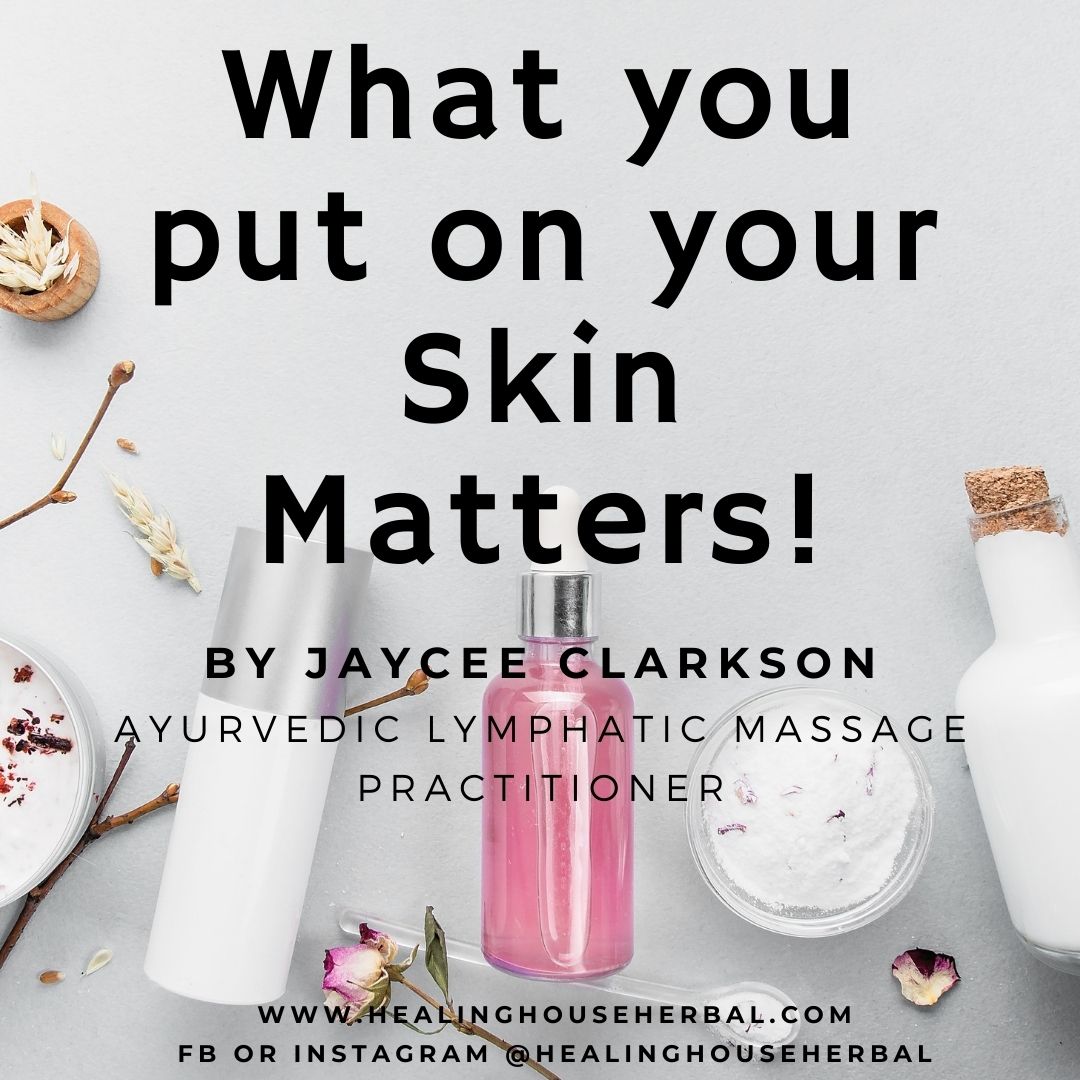What You Put On Your Skin Matters - By Jaycee Clarkson, Ayurvedic Lymphatic Massage Practitioner1/17/2021 What is the first thing you do when you wake up or before leaving the house for the day? Perhaps you soap up in the shower? Wash your face or put on deodorant? Many people have a daily routine that involves putting some sort of product on to the body.
So what really happens when we put something on our skin? Well - the skin is the body’s largest organ of absorption and elimination. What we put on our skin is absorbed and enters our body coming into contact with our tissues, organs, and glands. Seven years ago, I was shocked when I started flipping over my body care products and paying attention to the ingredients. Many of them had long long lists of unfamiliar words and chemical terminology. I was even more shocked when I started discovering what these ingredients were and their potential harmful effects on our health. Below we will look at three super common ingredients in skin and body care products. I encourage you to take a moment and grab a few bottles, be it hand soap, facial moisturizer, or shampoo, to see if the following ingredients pop up… Parabens (Paraben, methylparaben, butylparaben and propylparaben) - Act as preservatives in a variety of cosmetics. They are suspected endocrine disruptors and may interfere with male reproductive functions. Parfum - Any mixture of mystery fragrance ingredients that can trigger allergies and asthma. Some are linked to cancer and neurotoxicity. Some are harmful to fish and other wildlife. Sodium Laurel Sulfate - Used as a foaming agent in products such as shampoos, cleansers and bubble bath. Can be contaminated with 1,4-dioxane, which may cause cancer. Eek! Manufacturers market that these ingredients are present in such small amounts that they are “safe”, but when small amounts of potentially harmful ingredients are used once, or often multiple times a day, they build up in our system and add to our toxic load. When combined with daily exposure to other toxic substances through the air we breathe, the water we drink, and the food we eat, this build up can happen faster than our body’s ability to safely eliminate them. WHAT CAN WE DO? 1. Get informed! • The David Suzuki Foundation has incredible resources including the Dirty Dozen - a list of 12 ingredients to watch out for in skin care. • Another amazing resource is the Environmental Working Group’s Skin Deep database where you can search for products and individual cosmetic ingredients to check their safety rating. 2. Choose simple and pronounceable - Vote with your dollars! By choosing products with short lists of ingredients that you can pronounce we signal to manufacturers that this is what we want to see more of in skin care products. 3. Stay tuned! Next time we will dive into what our skin LOVES and how to nourish it with a focus on plant infused, whole, natural ingredients. If you are like I was many years ago - and you discover a large amount of products containing the Dirty Dozen - my counsel to prevent waste and emotional overwhelm, is to use up what you have and slowly start to transition. It can take time! As you transition, not only will you be reducing your daily dose of chemicals, you will also prevent these substances from entering our waterways, protecting aquatic ecosystems too! Jaycee practices Ayurvedic Lymphatic Drainage Massage and crafts her own line of plant infused skin care products and natural deodorant - check out her website to learn more or contact the office at Healing House to schedule an appointment.
1 Comment
|
Petra Sovcov is not a Medical Doctor (MD) nor a Naturopath (ND), she is a Clinical Herbal Therapist (CHT) and holds a Doctorate in Natural Medicine (DNM). The suggestions or recommendations made on this site are not meant to be a substitute for advice from your MD, or as a substitute for any prescriptions you may be taking. Suggestions followed will be the responsibility of the reader, and are stated with the intention of interest and education only. If you have a health issue, please see your primary care physician (MD) first and foremost. Categories
All
Archives
July 2024
|



 RSS Feed
RSS Feed